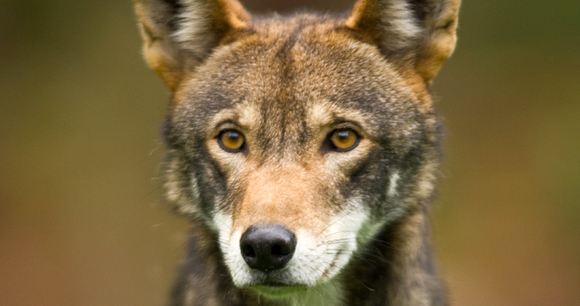
Chapel Hill, NC—The US Fish and Wildlife Service (USFWS) announced a proposal today to confine red wolves to federal lands—including a bombing range—within Dare County, North Carolina. Carrying out such a plan would doom the red wolf to extinction in the wild.
The proposal seeks to reduce the existing red wolf recovery area by 90 percent, to an area within a single county that could support fewer than 15 wolves. It would eliminate protections for any wolves that left the Alligator River National Wildlife Refuge or adjacent federal property. Specifically, the USFWS has proposed to allow any red wolves on private and state (nonfederal) lands outside of this area to be shot without consequence, even though there are fewer than 30 wild red wolves remaining in the world.
“The Service is not only abandoning the red wolf program against the advice and recommendations of expert biologists, but also sanctioning the slaughter of endangered animals that are not harming anyone or anything,” said Tara Zuardo, senior wildlife attorney for the Animal Welfare Institute (AWI). “This is a death sentence—a recipe for guaranteed extinction in the wild—and in violation of the law.”
The USFWS proposal comes nearly two years after a federal court ordered the agency to stop capturing and killing red wolves, in response to a lawsuit brought by AWI, Defenders of Wildlife and the Red Wolf Coalition, represented by the Southern Environmental Law Center.
The animal protection and conservation groups are currently challenging the USFWS in federal court over the agency’s recent failures to protect these wolves. For over a decade until 2015, the population of red wolves totaled more than 100, according to USFWS data. Since that time, red wolf population numbers have plummeted by more than 70 percent because of the USFWS’s ongoing actions and inactions that have imperiled the survival and recovery of the species in the wild. The groups will be urging concerned citizens to send comments to the USFWS opposing the proposal and demanding that the agency save the species in the wild, as required by law. Comments must be submitted during the 30-day public comment period that will follow an announcement published in the Federal Register on June 28. An earlier proposal by the USFWS to confine red wolves to Dare County generated 55,000 public comments in 2017—99 percent opposed to the plan.
In 2016, AWI and its allies called on the USFWS to meet its mandatory duty to protect the red wolf by revising the red wolf regulations under Section 10(j) of the Endangered Species Act to reduce shooting deaths, establish additional populations of red wolves in the wild and reclassify all reintroduced populations of red wolves as “essential” experimental populations.
That same year, conservationists secured a preliminary injunction in federal court to stop the USFWS from capturing nonproblem wild wolves throughout the five-county red wolf recovery area in North Carolina. Captured wolves were held for weeks or months, only to be released into unfamiliar territory, separated from their mates and pack, which diminished their chances of survival.
Once common throughout the Southeast, the red wolf’s wild population was wiped out in the mid-twentieth century by intensive predator control programs and loss of habitat. In the late 1980s, red wolves bred in captivity were reintroduced to the Albemarle peninsula in North Carolina within their native range.
The red wolf recovery program served as a model for reintroduction efforts and was widely celebrated as a success for 25 years before the USFWS abandoned the effort. In 2015, the USFWS announced that it had suspended the reintroduction of red wolves into eastern North Carolina. The agency also halted its coyote sterilization program, which was critical to reducing hybridization between red wolves and coyotes, and began authorizing private landowners to kill nonproblem red wolves on their property.
Editors’ Note: Photographs of red wolves are available for use with appropriate photo credit from the US Fish & Wildlife Service at http://www.fws.gov/redwolf/
Margie Fishman, (202) 446-2128, [email protected]